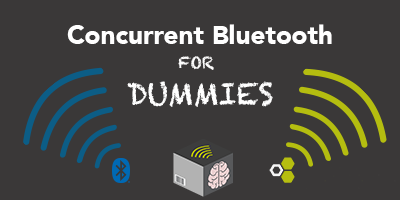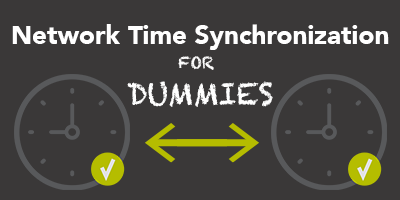Concurrent Bluetooth for Dummies!
Operating on a global market means supporting global wireless standards. And the only truly global wireless standard for end-user interaction out in the field is Bluetooth – like it or not. Having the ability to offer a concurrent Bluetooth interface turns your radio into a true cosmopolite – making your application accessible to users from all countries and all guilds. While underneath the interoperable surface there’s a lot of raw horsepower available for powering your business-critical application.
What is it?
Today everybody has a Bluetooth transceiver in their pocket, purse or backpack – making it a great technology for end-user interaction. And thanks to Bluetooth’s ability to enable low-power point-to-point connections, it is also a good fit with battery-operated devices such as room sensors and other IoT devices.
However, standard Bluetooth is not necessarily the best technology or protocol for creating a reliable wireless DMX stream or building a scalable and ultra-low power wireless mesh, which is why we have created CRMX and MiraMesh. The key then becomes to combine Bluetooth with these solutions – in the same device, on the same radio. And this is exactly what our Concurrent Bluetooth feature does.
What does Concurrent Bluetooth do?
This feature gives the developer access to a Bluetooth interface, that can maintain, for example, a BLE connection with a third-party device or transmit Bluetooth beacons, whilst maintaining and communicating other application data using CRMX or MiraMesh.
This is done by time-sharing the radio – in certain time slots having it focus on the LumenRadio protocol and in others on the Bluetooth. This switching back and forth happens so quickly that from an application or end-user perspective, it is perceived as happening simultaneously.
While in fact it is more like an old salesperson, juggling two parallel calls with two different customers with a phone in each hand – and getting both orders!
Why is this important for you?
Since Bluetooth more or less has a monopoly on end-user interaction and communication, due to its integration into every single smartphone and tablet on the market, the best way to create a truly seamless user experience is to include a Bluetooth interface when designing lighting control solutions or low-power/battery-operated IoT devices.
But interacting with an end-user through Bluetooth should not happen at the expense of your application and the wireless DMX stream or mesh. Keeping your network fully operational, while opening up for end-user interaction, is important for fulfilling the two main tasks of your device connectivity – delivering data to the right place at the right time and engaging your end users by simplifying their tasks.
It allows you to leverage the radio used for your application data for end-user interaction as well – reducing your product cost and size, lowering overall power consumption and eliminating the risk of internal interference (when using two radios in the same product).
What does it mean for LumenRadio?
Offering a Concurrent Bluetooth interface (or supporting any other standard protocol, thanks to our Universal Radio Protocol Time-Sharing feature) make devices running our CRMX and MiraMesh solutions interoperable with virtually any other device on the market – this is how we deliver on our promise to customers of offering the best of two worlds: “Maximum performance and interoperability combined”.
It also demonstrates our technology leadership – handling two different RF communication stacks, each with its own strict timing requirements, on the same radio is extremely difficult. And as far as we know, there is no other solution on the market offering this capability. (Although we know many have tried…)
Don’t miss the other posts from our series: Network Time Synchronization for Dummies and Cognitive Coexistence for Dummies.






